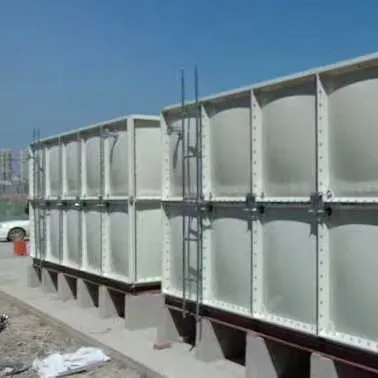loading...
- No. 9, Xingyuan South Street, Dongwaihuan Road, Zaoqiang County, Hengshui, Hebei, China
- admin@zjcomposites.com
- +86 15097380338
- Welcome to visit our website!
Cost Analysis of Fiberglass Water Tanks for Various Applications
Understanding Fiberglass Water Tank Prices
Fiberglass water tanks have become increasingly popular for both residential and commercial water storage needs. They are renowned for their durability, resistance to corrosion, and ability to maintain water quality. As interest in these tanks rises, so does the curiosity surrounding their prices. This article aims to explore the factors that influence fiberglass water tank prices and provide a clearer understanding of what customers can expect when budgeting for these essential storage solutions.
Overview of Fiberglass Water Tanks
Fiberglass water tanks are crafted from reinforced fiber-reinforced plastic, making them lightweight yet incredibly strong. They are available in various sizes and shapes, catering to different storage capacities and applications. These tanks can be used for potable water, irrigation, and various industrial processes. Their ability to resist the harsh effects of weather, UV rays, and chemicals makes them a preferred choice compared to traditional materials like steel or concrete.
Factors Influencing Price
Several key factors contribute to the pricing of fiberglass water tanks
1. Size and Capacity One of the most significant determinants of price is the size of the water tank. Smaller tanks designed for residential use can range from 100 to 1,000 gallons and typically cost less than larger tanks, which may hold several thousand gallons. The larger the tank, the higher the price, due to increased materials and production costs.
2. Manufacturing Quality The manufacturing process can also impact the price. Premium tanks made with superior materials or advanced production techniques can command higher prices. Tanks that are designed to meet specific industry standards or certifications for water storage typically come at a premium as well.
fiberglass water tank price

3. Customization Many customers may require custom features, such as specific dimensions, additional fittings, or specialized coatings. Customization generally increases the overall cost, as it often involves more complex manufacturing processes and additional labor.
4. Transport and Installation The logistics of transporting a large fiberglass tank can add to the overall expense. Depending on the distance from the manufacturer and the tank's size, shipping costs can significantly impact the final price. Additionally, installation services may be required, especially for larger tanks, further contributing to the total expenditure.
5. Brand and Warranty As with any consumer product, the brand can influence price. Established manufacturers with a reputation for quality and reliability may charge more for their tanks. Furthermore, warranties offered by manufacturers can affect costs; a longer warranty often indicates a more robust product, thus leading to a higher price point.
Estimated Price Ranges
On average, homeowners can expect to pay anywhere from $600 to $3,000 for a fiberglass water tank. Smaller, residential models typically fall within the lower range, while larger commercial models can easily exceed $5,000 or more. It's essential to shop around and compare prices from different suppliers to find a tank that meets both budget and specific storage requirements.
Conclusion
When considering a fiberglass water tank for water storage, it's crucial to factor in various elements that influence pricing. Understanding the impact of size, quality, customization, transport, and other variables can help potential buyers make informed decisions. Investing in a fiberglass water tank not only provides a reliable water storage solution but also ensures durability and longevity, proving to be a worthwhile financial commitment in the long run.
-
The Rise of FRP Profiles: Strong, Lightweight, and Built to LastNewsJul.14,2025
-
SMC Panel Tanks: A Modern Water Storage Solution for All EnvironmentsNewsJul.14,2025
-
GRP Grating: A Modern Solution for Safe and Durable Access SystemsNewsJul.14,2025
-
Galvanized Steel Water Tanks: Durable, Reliable, and Ready for UseNewsJul.14,2025
-
FRP Mini Mesh Grating: The Safer, Smarter Flooring SolutionNewsJul.14,2025
-
Exploring FRP Vessels: Durable Solutions for Modern Fluid HandlingNewsJul.14,2025
-
GRP Structures: The Future of Lightweight, High-Performance EngineeringNewsJun.20,2025
